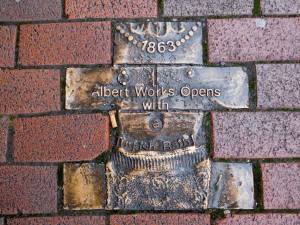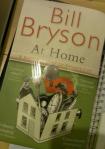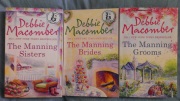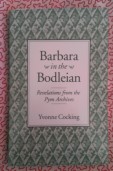 I took this book on holiday specifically to read in or coming out of Cornwall, as it’s set in Somerset, Devon and Cornwall, and in fact read it on the train home, going through those exact counties! A triumph of themed reading. And as he visits Godrevy, St Ives, Newlyn and Penzance in the book, I’ll share a few photos from our holiday after the book review. There’s no sign of the reading / reviewing slacking off, by the way – it’s marathon time on Sunday and so I’m resting up as much as I can, and will have a v quiet Saturday, then I’ll be recovering from the big effort (I forgot to do that for a bit last time: big mistake), so I hope you all don’t mind almost-daily single-book posts as opposed to the doubles I used to do.
I took this book on holiday specifically to read in or coming out of Cornwall, as it’s set in Somerset, Devon and Cornwall, and in fact read it on the train home, going through those exact counties! A triumph of themed reading. And as he visits Godrevy, St Ives, Newlyn and Penzance in the book, I’ll share a few photos from our holiday after the book review. There’s no sign of the reading / reviewing slacking off, by the way – it’s marathon time on Sunday and so I’m resting up as much as I can, and will have a v quiet Saturday, then I’ll be recovering from the big effort (I forgot to do that for a bit last time: big mistake), so I hope you all don’t mind almost-daily single-book posts as opposed to the doubles I used to do.
Simon Armitage – “Walking Away”
(21 January 2017 from Sian)
The follow-up to his wonderful “Walking Home“, but this time he walks the same distance around the South West Coast Path, starting in Minehead and doing the northern coast, giving poetry readings for whatever people feel they should pay as he goes along.
Full again of his laconic observations, people-avoiding and random poetry happenings, and with a new suitcase and old friends, this is a real joy to read – easy to read but not facile or shallow. I loved when the radar dishes he passes turn from menacing, sinister structures to white cereal bowls on the drainer after the washing up as he sees them from a different angle and in different weather conditions, and chuckled at his issues when presented with a special apple by an expert (he doesn’t like apples but when he goes to give it to a horse, remembers he doesn’t like horses much, either).
A few poems occur in the text (I think ones he wrote inspired by the journey) and more are mentioned – he does some Gawain and the Green Knight for some children at breakfast one morning, which was fun. Finding fewer birds inhabiting the cliffs than he’d expected, he treats us to a wonderful description of Bempton Cliffs, north of Bridlington, which we’ve visited a few years ago; it’s always lovely to find places you’ve been and things you know in a book, isn’t it (more of that later). He bemoans the up and down-ness of the endless river valleys working their way to the sea and longs for the moors, feeling ungrateful all the way – I love how he includes the bad as well as the good, or maybe I just like a moany traveller (cf. Paul Theroux).
The views of St Ives from Godrevy and visit to the seal beaches, with their charming signs asking people not to talk too loudly directly mirrored my experiences only that Wednesday, and it’s rounded off with a visit to the Scilly Isles, where I haven’t been yet (he doesn’t encourage me with his description of the boat over, although it’s lovely that he previously visited the shipyard where the Scillonian was built). A lovely and appropriate read.
A few photos that are appropriate for this post …
Mousehole in the sunshine, the furthest point from home on my 10-mile run on Tuesday. I banked lots of good memories and feelings for the marathon on this relaxed run which ended with a local friend joining me on her bike.

The Scillonian coming in to harbour:

Towards St Ives from Godrevy:

Godrevy Lighthouse (that’s Virginia Woolf’s lighthouse and I took the photo for Ali):

Godrevy seals. I heard them calling, too! A lovely friend took me there and it was magical.

Birds in Penzance, I love the fuzzy Ringed Plover in particular:

Reading on the prom: my happy place:

Sunrise from our holiday cottage:


 In my
In my 





































Recent comments